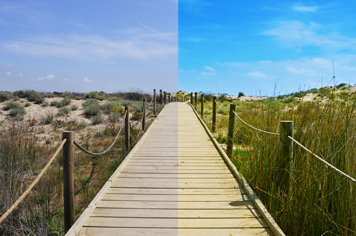
While photo manipulation and colorization helps preserve family history, an increasing number of educational institutions are implementing such projects. According to a recent report, Clear Creek High School in Texas has launched photo restoration project to make available some of Creek’s rich history to future generations. They are planning to reconstruct photographs dated from over a 50-year period – some of which are mold-covered, with worn down edges, and wrinkled from water damage.
Process of Photo Restoration
Degradation of photos can occur in many ways and usually includes a combination of fading, color casts, and localized physical damage such as stains or scratches. The restoration project can handle of these issues:
- Fading with levels, curves, contrast and black level tools
- Color casts with white balance, color balance and other color tools
- Localized damage with clone stamp, healing brush and other selective editing tools
Before the restoration process, image scanning has to be done to convert the original photo or its film negative to digital format. The procedure helps to:
- Fix fading to restore old photos
- Fix rips and tears for photo repair
- Fix water damage
- Remove creases, crinkles, folds and scratches
- Remove stains, discoloration, specks and smudges
- Remove text or watermarks
Once scanned, the images will go through the following stages:
- Step I: Image is opened in Photoshop or other related software to assess the extent of damage and formulate a plan accordingly
- Step II: The curves, levels, and wrinkles in the photo are adjusted
- Step III: Zoom on the image and start adjusting the details
- Step IV: Zoom in really tight and deal with small things like dust, scratches, stains, and creases
- Step V: Crop out the extraneous edges of the original scanned photo, creating new, clean edges
The actual procedure and the number of steps involved would of course depend on specific requirements and the extent of damage to the original.
Photo restoration requires many interpretive decisions and careful judgment is a critical element of the process. You should have a clear idea on what you hope to achieve and prioritize the aspects to improve. If you are involved in a big project, consider seeking the assistance of a reliable professional photo restoration company.

